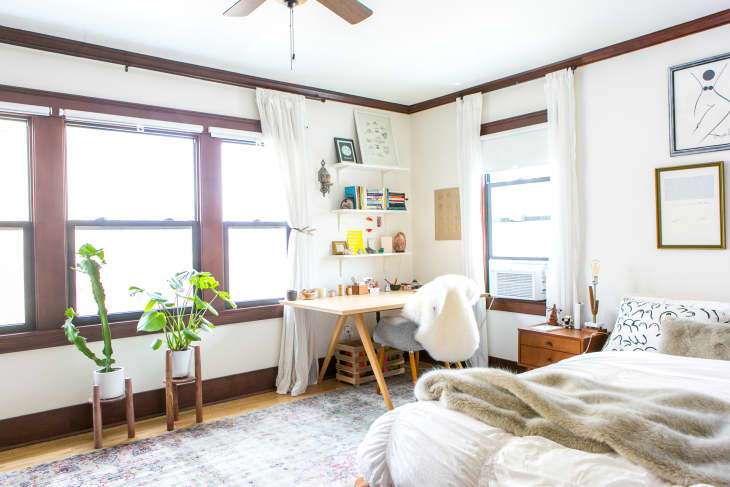Here’s What the Color of Your Childhood Bedroom Says About You
It might not have seemed like it when you were decking your shelves with Beanie Babies or tacking New Kids on the Block posters on your freshly-painted walls , but setting up your childhood bedroom was perhaps your first foray into the world of interior design. Your room was your escape from the grueling world of homework and soccer tryouts, somewhere that was solely designed with you (or you and a sibling or two) in mind.
Sure, your eye for design has matured since the days of butterfly-printed curtains and fuzzy photo frames, but there’s a chance the color of your OG bedroom still speaks to your current aesthetic. If it doesn’t? Perhaps it’s a chance to get reconnect with a time when you were deeply in touch with your own “favorite color.”

“Color is one of the first things people of all ages assess when visually taking in an environment or object,” explains Amber Dunford, the lead stylist at Overstock and design psychology expert. “It is also one of the most emotional elements of design, as people typically use words such as love or hate to explain how they feel about a color.”
So what does the color of your childhood bedroom say about your design style today? Dunford breaks down six popular options below:
Red
Red is a powerful color, explains Dunford—and choosing it did wonders for your future design style.
“It’s a powerful color,” she says. “Those who selected red might be seeking more excitement in their life given the color’s ability to create energy.”
Translation? Anyone who had a red bedroom back in the day is likelier to be a certified maximalist today. But instead of splashing your walls with the fiery tone now, you probably channel your bold spirit with patterns and curvy furniture. Simply put, more is more.
Blue
Blue is a classic children’s bedroom color. With so many nuanced shades to choose from, it can channel a variety different moods.
“Blue is one of the most preferred colors among people in the U.S., but it holds contrasting associations,” Dunford says. “For some, blue signifies feelings of calm and relaxation as it conjures scenes of placid water or blue skies. For others, blue can be associated with sadness and feeling down.”
But regardless of the specific shade, Dunford says blue sparks sympathy and compassion for the environment. If you had a blue bedroom as a youth, you might have since taken your love for Mother Nature to the next level with raw wood coffee tables, organic linens, and furniture free of chemicals.
Pink
Turns out, the color pink is associated with a lot more than princesses and sparkles.
“It is a happy color and has been shown to decrease feelings of agitation or anxiety ,” Dunford says.
If you wanted to transition that happy, relaxed spirit to your adult life, you probably now embrace the bohemian aesthetic. After all, what’s more freeing than prints and a couch layered in throw pillows and blankets?
Purple
Loved purple as a kid? Your bedroom was definitely fit for a queen… or king… or duke… or… you get the point, right?
“Purple often signifies royalty, nobility, or opulence,” Dunford says. “It can also relate to magic, mystery, and creativity, so those who have big imaginations or are creative thinkers might be drawn to this color.”
While your adult space is probably not modeled after Versailles, there’s a good chance you still enjoy the finer things in life. Gilded mirrors, intricately carved furniture, and plush fabrics are accessible and attainable alternatives to the lap of luxury.
Green
Sorry, Kermit, but we have to disagree with you: Not only is it easy being green, but it’s the key to creating some zen in your space.
“Green can be a healing color, as it’s found in nature and in almost all plant life,” explains Dunford. “It will often symbolize growth, harmony, and stability, so it may be sought after by those who need these things in their life.”
Any adult thinking fondly of their green childhood bedroom that want to bring some harmony to their grownup space should definitely check out six feng shui tips every beginner should know.
White
When all the other kids were coating their bedrooms with bright colors, you were ahead of the design curve by embracing a pared-down color palette. “White will often signify cleanliness and safety,” Dunford says. “Often times when people need a fresh start, they are drawn to white as an emotional palate cleanser.”
Unless you’ve taken a design U-turn, you haven’t ditched your desire for crisp, clean design. Your friends might’ve called your neutral room “boring” back in the day, but now they’re envying your early grasp on minimalism.
Your comment